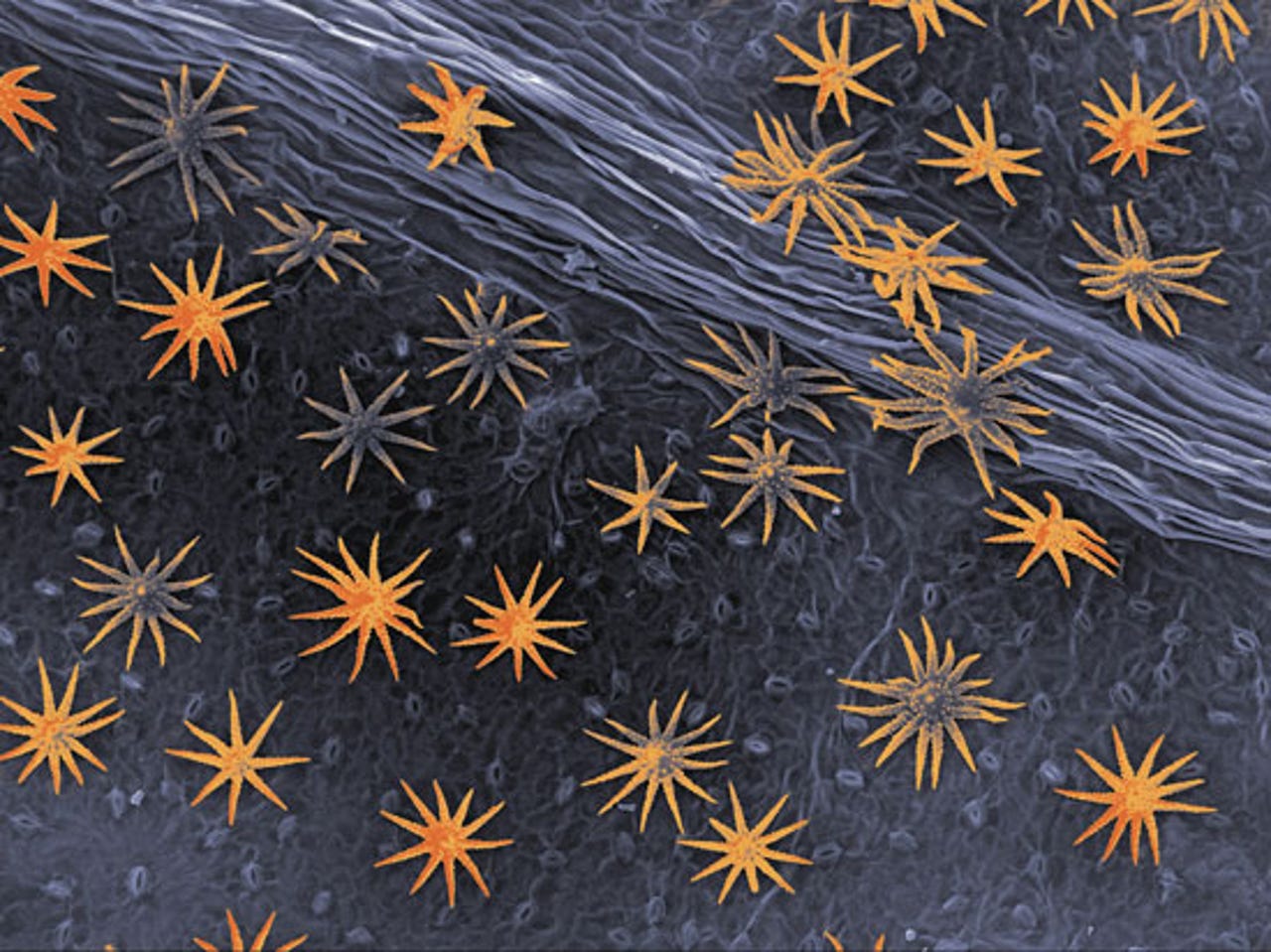Photos: Where art meets science


Hairs on leaf
This photograph does not portray orange starfish on a rocky seabed, but rather tiny star-shaped hairs on a plant's leaf. The hairs, called trichomes, can help stop insects from feeding on the leaf and prevent some water loss.
Shrimp cleaning teeth
A shrimp enters the mouth of a fish to clean its teeth. Fish value this service because shrimp can remove and eat harmful parasites. When fish need a cleaning, they approach the anemone in the background, in which the shrimp lives, and open their mouths, encouraging the shrimp in. Both partners benefit.
Funfair forces
A rotating amusement park ride at dusk. Passengers on this ride experience a force about twice that of gravity. The force is due to the acceleration felt by the change in direction necessary to keep the passenger moving in a circle at a constant speed. The same force applies to satellites orbiting planets and planets orbiting the sun.
How thick is your brain?
The thickness of a brain's gray matter varies across the brain. Here it is color-coded, from red (thickest) to blue (thinnest). Made up of nerve cell bodies, gray matter is thickest in the frontal lobes of the brain, at the top. Researchers believe that the frontal lobes control languages, memory, judgment and social skills.
Liquid crystals
Molecules' orientation within a liquid crystal can be seen by viewing the crystals with polarized light. Regions that have the same color here have the same orientation.
Surface tension
Water's surface tension can support a metal paper clip. An attraction between the molecules in water causes its surface to act in an elastic manner. By photographing it using a grill in front of the light source, the indentation of the surface caused by the clip's weight can be seen. This bending of light is similar to that in strong gravitational fields, as predicted by Einstein's theories.
Hiding
Identification techniques are increasingly relying on medical technology, or biometrics, to provide more personal forms of ID, which are harder to fake. Some feel that this is an invasion of their privacy.
Bursting balloon
The popping of a balloon happens too fast for us to see in detail. But high-speed photography reveals what is happening at the time of the pop: The stretched skin of the balloon breaks rapidly and violently.
Butterfly on a plant stem
The cellular structure of this sunflower stem includes red vascular areas and blue supportive tissue. This systematic regularity contrasts with the sweeping outline of the butterfly.
Cancer cell movement
This cancer cell is moving down a pore in a filter, during a process of spreading called metastasis. The image was taken at Cancer Research UK, where the spread of cancer is studied in the hope of finding a cure.